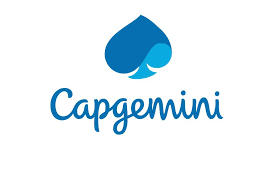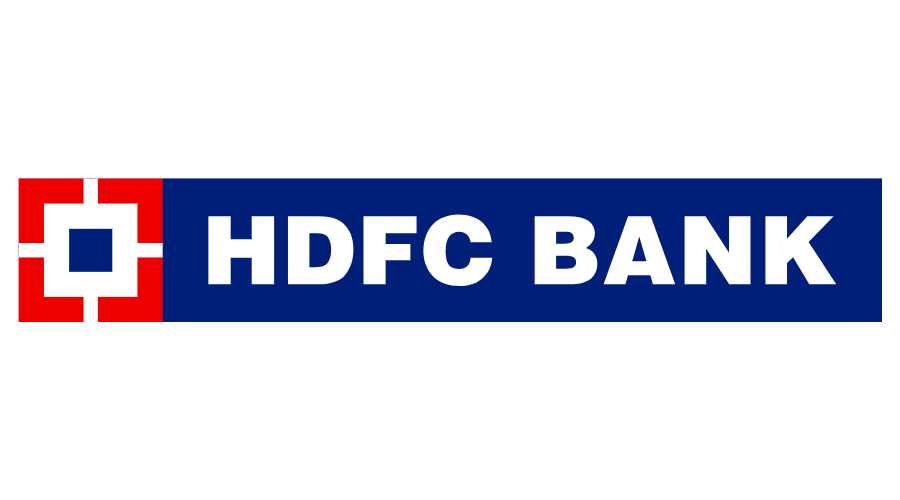UML: UML Modelling and Design Complete Course for Beginners
Complete UML Course: UML Diagrams along with step wise UML Object Oriented approach using Smart Draw and Visual Paradigm
Lectures -201
Resources -10
Duration -9 hours

30-days Money-Back Guarantee
Get your team access to 10000+ top Tutorials Point courses anytime, anywhere.
Course Description
Comprehensive Course Description
UML (Unified Modeling Language), a standardized modeling language, is a powerful tool. This general-purpose language consists of a unified set of diagrams. However, you must first understand that UML isn't a programming language. Rather, it's a visual language developed to help software and system developers for specifying, visualizing, creating, and documenting the objects of software systems, as well as for non-software systems and business modeling.
We need UML because complex applications are dependent on the collaboration and planning of various teams. But the problem is businesspeople don't understand code. In this context, having a clear way of communication among team members is crucial. Here's where UML helps non-programmers to quickly understand the essential requirements, processes, and functionalities of the system. UML represents a selection of best engineering practices. These practices have proven to be highly successful in modeling huge and complex systems.
UML is a vital component of developing object-oriented software. In fact, UML is important for the entire software development process. UML expresses the design of software projects using mostly graphical notations. Project teams can communicate, analyze potential designs, and confirm the software's architectural design using UML.
The design of this course is in the same pattern. You start with a brief introduction and overview of UML before proceeding to its importance and applications. Since UML is incomplete without a visualization tool, we have used tools along with their practical explanation to help you become familiar with hands-on UML concepts. The main aim is to build your proficiency so that you can confidently create a UML diagram for software modeling and design.
Visual Paradigm is used extensively throughout this course. This tool covers the main project, the case study, and a variety of mini-projects too. Every single diagram is live. The purpose is to depict the exact environment you’ll face in a real-world workplace. The discussed tips also focus on overcoming various real-world challenges. Moreover, the course is replete with quizzes and exercises to keep you engaged and help you master complex analytical concepts.
In addition, the case studies, mini-projects, system requirement documents, and practical elaboration of each diagram in the mini-projects will strengthen your understanding of software design concepts. You'll find this course immensely helpful if you are a university student wanting to make your project or working on your thesis, or you have got an assignment on software engineering, or you are seeking a new role in the system modeling and design domain. You can also use the guidelines in this course to work as a freelancer and make various UML modeling diagrams. In case you have stuck anywhere, we are here to guide you not only after course enrolment but also after course completion.
This course does not end here. We address career development in the concluding section to prepare you for interviews in any UML role. Also, you are introduced to the market trends so that you are fully prepared to go to the workplace with essential UML concepts and practice them with confidence and encouragement. Lastly, a UML glossary that summarizes all the important terms in one document is included. On the whole, this MUST take course for software engineers and common users alike will sharpen your skills and enhance your career.
How Is This Course Different?
This Learning by Doing course follows a unique format: Every theoretical explanation is accompanied by practical implementation.
Most online courses are overloaded with examples without any implementation. Explanation of theoretical concepts is another missing element. But this course offers you a true balance between theory and practice. Since the focus is to teach UML to a beginner, we have tried our best to simplify things and implement everything right from the first section.
The course ‘UML Modeling and Design’ reflects real-world workplace skills. You will become proficient in the fundamental concepts and methodologies of UML.
The course is:
- Easy to follow.
- Expressive.
- Thorough.
- Practical with live working on UML Tools.
- Self-explanatory and includes the latest developments in this field.
You will be motivated to continue your learning journey as you understand the detailed compilation of all the elementary concepts. You will make quick progress as a result. In this course, you will also experience much more than the topics covered. At the end of each topic, you will revise what you have learned by working on the assigned Homework/tasks/activities/quizzes (solutions are also provided). We follow this learning by doing methodology to evaluate and speed up your learning based on the concepts already covered and methods you have learned. These activities are aimed at getting you up and running with UML implementations.
The course material is meticulous with high-quality video content, assessment questions, informative handouts, and detailed course notes. Our friendly team will also quickly answer any course-related queries.
The course tutorials are divided into around 200 short videos. You’ll learn the essential concepts and methodologies of UML Modeling and Design along with practical implementation. The runtime of the HD videos is approximately 10 hours.
Why Should You Learn UML Modeling and Design?
UML is short for Unified Modeling Language (UML). You can use the UML language to visualize, elaborate, construct, and document products in software-intensive systems. Artifact refers to an assortment of products produced during software development, such as models, source code, test cases, etc. UML modeling can achieve the following objectives:
- Use models to better understand problems.
- The use of models can enhance communication among team members.
- Use models to detect errors or omissions earlier.
- Design results can be obtained by using models.
- The model provides the basis for the final code.
Course Content:
This comprehensive course covers the following topics in-depth:
Section 1: Introduction of the Course:
1. Introduction
2. What is UML?
3. Why use UML?
4. Goals of UML
5. Introduction to the Course
6. Introduction to the UML project
7. Introduction to the Course Instructor
8. Ending note
Section 2: UML, its importance, and applications:
1. The history and origins of UML
2. UML and its role in object-oriented modeling and design
3. Fundamental concepts of UML Modeling and design
4. Steps involved to link UML with OO Modeling and design
5. UML Modeling Tools
Section 3: System Scenario
1. What is a Scenario?
2. When are scenarios appropriate?
3. How do you write scenarios?
4. Example
5. Case Study: Airport Check-in system
6. Quiz
7. Quiz Solution
8. Introduction to UML Diagrams
Section 4: Use Case Diagram
1. What is Use Case Diagram?
2. Elements of Use Case diagram
3. When to use the Use Case Diagram?
4. How to Draw Use Case Diagram?
5. Example: Stock Brokerage System
6. Quiz
7. Quiz Solution
8. Relationships in Use Case Diagrams
9. Do’s and Don’ts in Use Case diagrams
10. Use Case Scenario
11. Example: Order Product
12. Quiz
13. Quiz Solution
14. Mini Project: Hospital Management System, Library Management System
Section 5: Class Diagram
1. What is a Class Diagram?
2. Definition and Purpose of Class Diagrams
3. Components of the Class diagram
4. Elements of a Class Diagram
5. Relationships between classes with examples
6. Example: Student and College
7. Quiz
8. Quiz Solution
9. When to use Class Diagrams?
10. How to draw Class Diagrams?
11. Do’s and Don’ts in Class Diagrams
12. Example Mini Project: ATM System
13. Quiz
14. Quiz Solution
Section 6: Interaction Diagrams
1. What is the Interaction Diagram?
2. Kinds of Interaction Diagrams
3. When to use Interaction Diagrams?
4. How to draw Interaction Diagrams?
5. Introduction to the Sequence Diagram
6. How to draw a Sequence Diagram?
7. Example Mini Project: Report Card Generation System, Library Management System
8. Quiz and Quiz Solution
Section 7: State and Activity Diagram
1. What is a State Diagram?
2. When to use the State diagram?
3. How to draw State diagrams?
4. Example: Order Processing
5. Quiz and Quiz Solution
6. What is an Activity Diagram?
7. When to use the Activity Diagram?
8. How to draw Activity Diagrams?
9. Terminologies and Symbols of Activity Diagrams
10. Example: Student Report Generation
11. Quiz
12. Quiz Solution
Section 8: Summary of Diagrams
1. Overview of UML Modeling and Diagrams
2. Summary in one go
3. Class Diagram
4. Component and Composite Structure Diagram
5. Deployment Diagram
6. Object Diagram
7. Package and Profile Diagram
8. Activity Diagram
9. State Machine Diagram
10. Use a Case Diagram
11. Communication Diagram
12. Interaction Diagram
13. Sequence Diagram
14. Timing Diagram
15. References to use
Section 9: Case Study and Project
1. Case Study: Bank ATM System
2. System Requirements
3. Project: ATM System
Section 10: Careers with UML and Marketplace
1. Career Roles
2. Competitive Market Value
3. Interview Preparation
4. UML Glossary
After the successful completion of this UML course, you will be able to:
- Relate the concepts and practices of software engineering modeling and techniques and implement them using UML software.
- Apply for jobs related to System Developer, System Engineer, System Architect, or any other role related to UML.
- Work as a freelancer in jobs related to UML and System Designer or Modeler.
- Implement any project that requires UML knowledge from scratch.
- Improve and extend the implementation of any other project for performance improvement.
- Know the theoretical and practical aspects of system design through UML.
Who this course is for:
- Absolute beginners in UML, Software Engineering, or any UML tool.
- People keen on extending their career in software modeling.
- People are keen on making themselves ready for UML roles.
- People are keen on learning UML tool along with its implementation in realistic projects.
- UML modelers, UML tool lovers, and software engineers.
- People interested in learning new tools.
Who this course is for:
- People who are beginners and know absolutely nothing about UML, Software Engineering, or any tool to use it
- People who want to extend their career in software modeling.
- People who love to make themselves ready for UML roles
- People who want to learn UML tools along with their implementation in realistic projects.
- Software engineers, UML Modelers, and UML tool lovers.
- Who are interested in learning new tools
Goals
The introduction and importance of Unified Modelling and Design.
Practical explanation and live implementation of all important diagrams used in UML.
Basic concepts of requirement engineering required for understanding UML
Practical implementation of UML concepts
Complete guide and tutorial of UML Diagrams from scratch to Final Project
Mini projects and Quizzes with Solutions to reinforce your learning skills
Mini Projects, Case study and final project to explain everything in detail
Segregated modules to learn fundamental concepts of UML Modelling along with explanation and practical implementation using quizzes
Case Study: Banking System along with system requirements
Mini Projects: Hospital Management System, Library Management System, Online Shopping System, Airport Check in System, Stock Brokerage System, Report Card Gen
Project: ATM System
Interview Preparations
UML Glossary
Prerequisites
Basic understanding of Computer and computer science terms.
A willingness to learn and practice.

Curriculum
Check out the detailed breakdown of what’s inside the course
Introduction to the Course
11 Lectures
-
Promo 02:32 02:32
-
Introduction 01:53 01:53
-
What is UML 02:28 02:28
-
Why We Use UML 02:56 02:56
-
Goals of UML 04:23 04:23
-
Introduction to the Course 02:50 02:50
-
Introduction to the Projects 02:58 02:58
-
Introduction of the Instructor 04:25 04:25
-
What More You Need 01:32 01:32
-
Request for Your Honest Review 01:18 01:18
-
Resources
UML its importance and applications
6 Lectures

System Scenario
10 Lectures

Use Case Diagram
42 Lectures

Class Diagrams
43 Lectures

Interaction Diagrams
16 Lectures

State and Activity Diagrams
20 Lectures

Summary of UML Diagrams
16 Lectures

Project
21 Lectures

Careers with UML and Market Place
16 Lectures

Instructor Details

AISciences
Course Certificate
Use your certificate to make a career change or to advance in your current career.

Our students work
with the Best


































Related Video Courses
View MoreAnnual Membership
Become a valued member of Tutorials Point and enjoy unlimited access to our vast library of top-rated Video Courses
Subscribe now
Online Certifications
Master prominent technologies at full length and become a valued certified professional.
Explore Now


 Updated on Jul, 2024
Updated on Jul, 2024
 Language - English
Language - English
